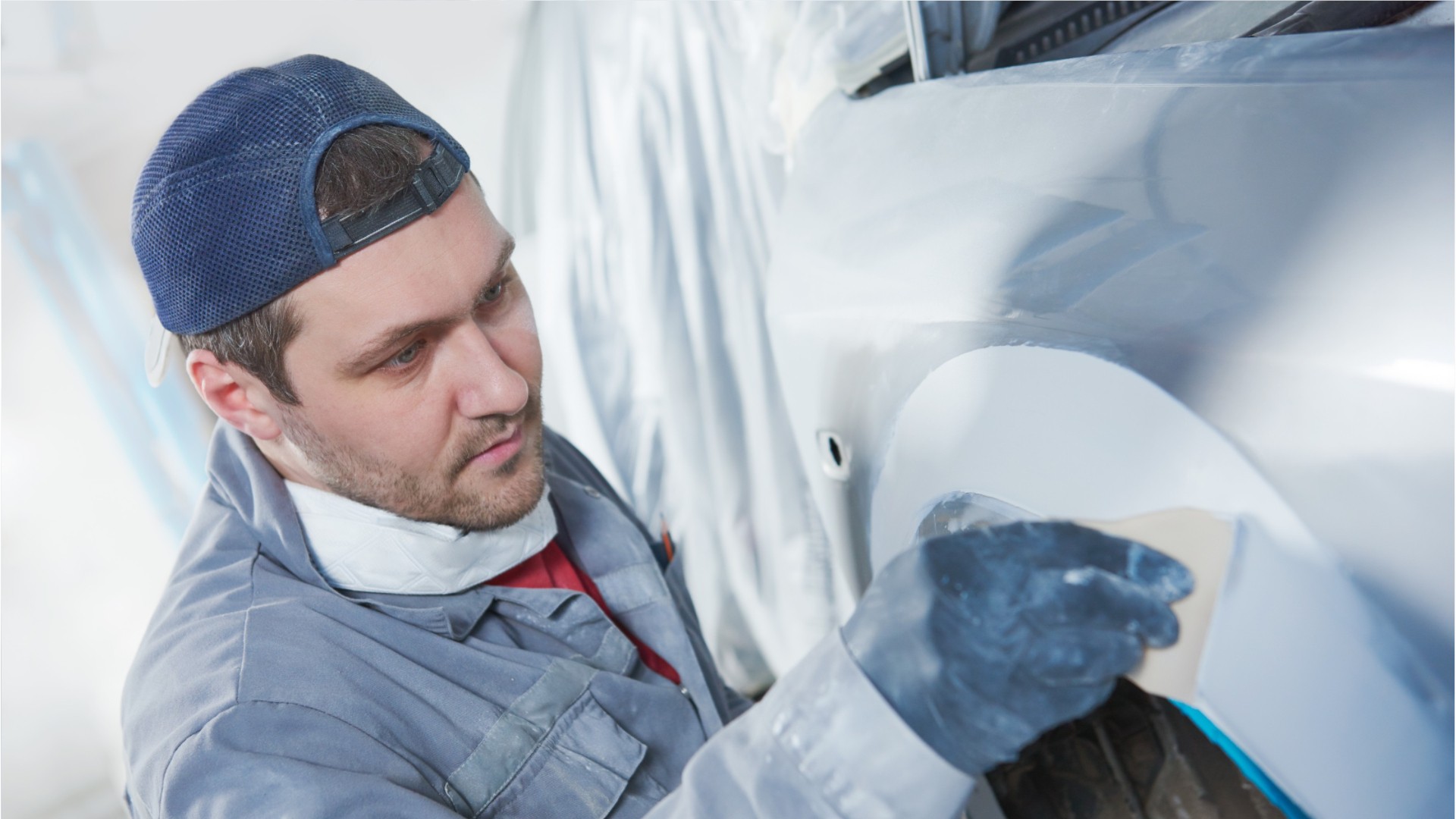Automotive Body & Related Repairers
Auto Body Man, Automotive Body Technician (Auto Body Tech), Body Man, Body Technician (Body Tech)
What they do:
Repair and refinish automotive vehicle bodies and straighten vehicle frames.
On the job, you would:
- File, grind, sand, and smooth filled or repaired surfaces, using power tools and hand tools.
- Inspect repaired vehicles for proper functioning, completion of work, dimensional accuracy, and overall appearance of paint job, and test-drive vehicles to ensure proper alignment and handling.
- Fit and weld replacement parts into place, using wrenches and welding equipment, and grind down welds to smooth them, using power grinders and other tools.
Knowledge
Engineering and Technology
- mechanical
Business
- customer service
Manufactured or Agricultural Goods
- manufacture and distribution of products
Math and Science
- arithmetic, algebra, geometry, calculus, or statistics
Skills
Basic Skills
- keeping track of how well people and/or groups are doing in order to make improvements
- listening to others, not interrupting, and asking good questions
Problem Solving
- noticing a problem and figuring out the best way to solve it
Abilities
Hand and Finger Use
- keep your arm or hand steady
- hold or move items with your hands
Ideas and Logic
- notice when problems happen
- order or arrange things
Personality
People interested in this work like activities that include practical, hands-on problems and solutions.
They do well at jobs that need:
- Attention to Detail
- Dependability
- Cautiousness
- Perseverance
- Stress Tolerance
- Achievement Orientation
Technology
You might use software like this on the job:
Operating system software
- Microsoft Windows
Word processing software
- Microsoft OneNote
- Microsoft Word
Analytical or scientific software
- Collision damage estimation software
- Swan River Estimiser Pro
Education
Education: (rated 2 of 5)
high school diploma/GED or
certificate after high school
usually needed
certificate after high school
usually needed
Job Outlook
Below Average
New job opportunities are less likely in the future.
Explore More
- Aircraft Structure, Surfaces, Rigging, & Systems Assemblers
- Automotive Service Technicians & Mechanics
- Electric Motor, Power Tool, & Related Repairers
- Rail Car Repairers
- Tire Builders
You might like a career in one of these industries:
See more details at O*NET OnLine about Automotive Body & Related Repairers.





